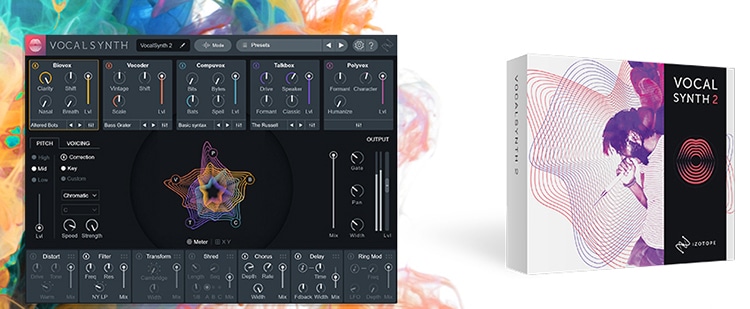Start by selecting a Mode in which to use the plug-in (Auto, MIDI, or Sidechain). VocalSynth 2 automatically detects the DAW you’re working in and provides instructions on how to get set up.
Color and shape your vocals with VocalSynth 2. Enjoy five blendable, eccentric must-haves and stompbox-style studio effects. A one-stop for past, present, and future vocal sounds, VocalSynth 2 features Vocoder, Compuvox, Polyvox, Talkbox, and Biovox modules.

In Auto Mode, VocalSynth 2 uses the plug-in’s internal synthesizers to generate sound. Just insert it on an audio track and press play.
- The iZotope VocalSynth 2 has been completely redesigned, featuring more power, a revamped interface, and better CPU optimization than its predecessor.
- IZotope Vocal Bundle. The Vocal Bundle combines two inspiring vocal tools into one powerhouse package. Give your vocal a radio-ready sheen with Nectar 3's surgical polishing, and enter uncharted creative territory with VocalSynth 2's wealth of effects.
In MIDI Mode, you can control the notes and harmonies that VocalSynth 2 generates with a MIDI keyboard or other MIDI device.
In Sidechain Mode, you can drive your favorite synth, guitar, or any other sound through VocalSynth 2 modules, enabling you to turn your audio sources into vocal effects.
There are 5 modules in VocalSynth 2.

You can also choose from over 100 global presets, which are categorized within Auto Mode and MIDI Mode, not mention all the module-specific presets, which you can toggle within the Advanced panel of each module.
Modules can be toggled on and off and blended together (even directly from the animation).

On the left side of the UI, you’ll see Pitch and Voicing parameters to create unique scale types, pitch correction processing, and give you ability to choose between polyphonic and monophonic MIDI operations. There’s also a Glide parameter, which behaves like a portamento.

The VocalSynth 2 effects on the bottom of the plug-in, like Distort, Shred, and Chorus, are all reorderable.
Izotope Vocalsynth 2 Free Download
On the right side of the UI, you’ll see global controls, where you can adjust level, gate, panning, width, and wet/dry signal.